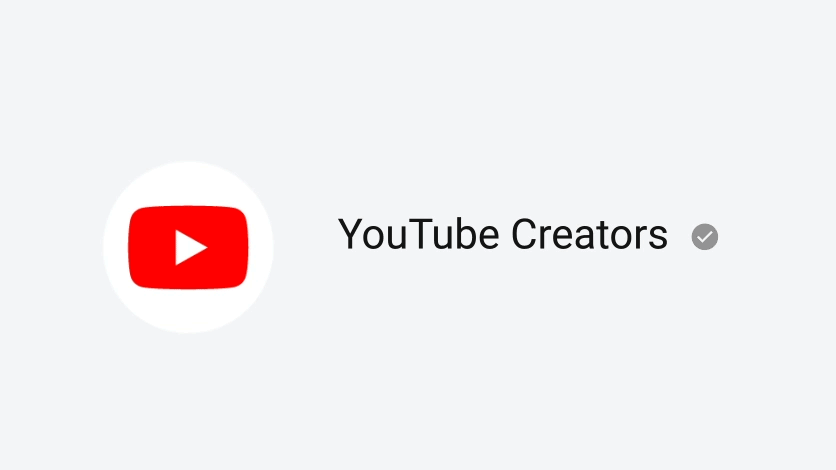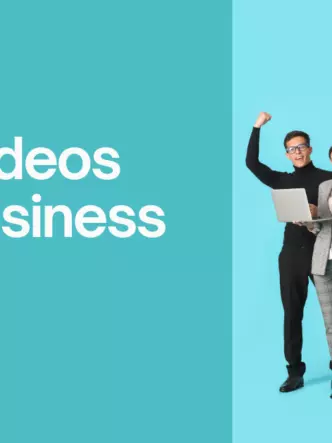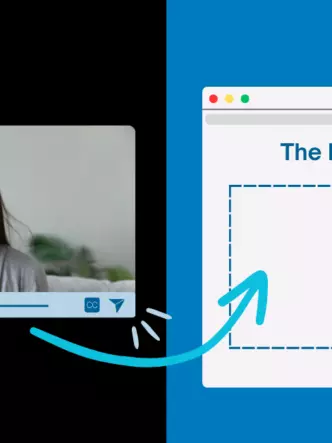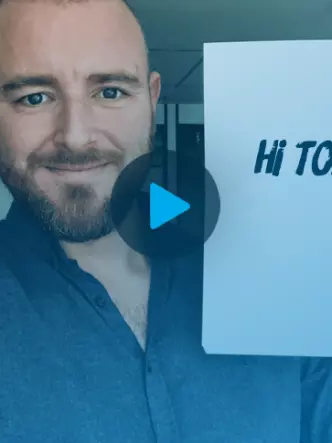Since September of 2020, YouTube has terminated more than 8,000 channels and many more videos because of policy violations.
If you want to continue to operate within, and especially profit off of your YouTube videos, you have to see to it that you are abiding by YouTube’s terms of service (TOS)
We’ve rounded up the most essential updated guidelines you should be paying attention to with your YouTube videos.
Before we get to them, it’s important to note that YouTube has a strict ‘three strikes and you’re out’ policy. If you accumulate three policy violations, your YouTube account will be permanently shut down, and you will not be able to access videos and other info you’ve uploaded to it.
1. You cannot claim that the 2020 American presidential elections were rigged in a YouTube video
YouTube has declared that any video insinuating that there widespread voter fraud swayed the outcome of the election will be removed from its platform. In a lengthy blog post, the Google-owned video platform made it clear that any videos that claim that a presidential candidate won the election due to widespread software glitches or counting errors will not be erased.
This policy has come into effect on Wednesday, December 9th, 2020.
2. You can no longer post any adult-related content if your channel is ‘kid friendly’
Forced to pay a record $170 million for alleged violations of Children’s Privacy Law, YouTube has decided to begin enforcing new, children-related regulations.
As of January 2020, YouTube creators will have to explicitly state their videos’ projected audience.
During the upload process, creators will need to check a box that indicates that the video in question is ‘directed to children’.
Here’s what it looks like within YouTube Studio:

Ticking this box will prevent the video from running algorithm-based, recommended ads, triggered by prior indication of interest (AKA personalized ads.)
These differ from contextualized ads (i.e. pop-up banners) that can appear regardless of age-appropriate designation.
Here’s the catch:
This new policy applies to every single video that exists on YouTube’s database.
Even if you’ve uploaded thousands of videos, each will need to be reviewed and deemed either “kid-directed” or suitable for a more mature audience.

This is a major development, giving tens of thousands of YouTube creators great reason for concern.
Given its amorphous terminology, it is still unclear what content will fall outside of the definition of ‘child-directed’.
What exactly is kids content? Google defines child-directed content as that which is appropriate for children up to the age of 13, the minimum age to create a YouTube channel.
Videos caught targeting children while containing content deemed by YouTube as unsuitable for kids can result in creators paying the FTC fines of up to $42,530.
The same goes for videos classified as non-child friendly that are deemed by YouTube as containing content that is kid friendly.
If a video presents mature themes but showcases animated characters, it may result in its creator being handed a hefty fine.
The challenge for YouTube creators
YouTube creators rely primarily on personalized ads’ revenue
If your YouTube channel is a primary source of income, it would be wise to make a strategic decision:
Do you change the way you create YouTube content and make it suitable for children? Conversely, do you decide to give up on your younger audience base? You’ll need to make that decision, quickly.
It is important to note that you can define your YouTube channel as ‘kid friendly’. Doing this will see you losing your community page, you won’t be able to have the bell notification turned on and you won’t be able to comment on other videos.
In a nutshell:
Due to the Children’s Online Privacy Protection Act, YouTube is cracking down on potential predatory activity on its platform. You now must decide if the video you uploaded is suitable for children (e.g. 13 years old and younger) when you upload it to your channel.
Many might find this to be a gray area, so it’s recommended you research and stay up to date on what YouTube considers kid-friendly. Videos that are declared to be unsuitable for kids will not enjoy targeted ads and an open comment section. Additionally, the feature that allows you to send push notifications will be disabled.
A video declared as child-friendly that is found to feature adult themes, language or imagery will result in its uploader likely handed a hefty fine.

3. No more tricking your way to the top
You know the saying ‘You can’t buy your way to the top’?
Whether or not that’s universally true is debatable. On YouTube, however, it is a cold hard fact.
YouTube’s Fake Engagement Policy prohibits creators from boosting their account subscribers using tactics such as sub-for-sub and free giveaways. The former was a common practice in the earlier days of YouTube; it entailed asking someone to subscribe to your channel in exchange for you subscribing back to theirs.
The explicit goal of these giveaways cannot be to get people to subscribe, like or comment on your video. Any phrasing or call-to-action that even implies this will likely get you in hot water.
If you’re intent on conducting giveaways, make sure that the call-to-action adheres to this policy.
Think of asking people to visit your channel rather than subscribe to it.

4. You’ll need more than 100k subscribers for your channel to be verified
Having a verified YouTube channel is a notable achievement.
It may not automatically lead to newfound wealth or elevate creators to a hire tier of ad revenue. However, the cachet a verified badge carries with it is what leads creators to work tirelessly to attain it. People tend to trust verified channels, and being recognized as such greatly contributes to these channels’ continued growth.
There are a few major changes in the verification process and appearance of these channels.
First off, instead of the check badge, YouTube will signify verified channels in this manner:
Beyond the shift in aesthetics, there are more substantive changes.
In the past, all channels had to have was at least a hundred thousand subscribers to be given the coveted verification badge. That’s no longer the case.
As of January 1st, 2020, racking up one hundred thousand subscribers is no longer the sole criteria by which a channel will be verified.
YouTube will now examine each channel that garners the prerequisite hundred thousand subscribers and decide whether to grant them the new brand of YouTube Creator.
YouTube will need to see that a channel in question is run by a real figure, artist or public figure and that its name is not similar to other popular YouTube channels ; this is what YouTube calls the authenticity test.
Additionally, a verified channel is one that YouTube sees as complete.
The channel must appear with a full description, channel icon and boast content that can be active on YouTube.
To begin your application process, you can click here and fill in the relevant info.

5. Pay attention to your video thumbnail
Savvy YouTube creators have figured ways of having their videos pop by leveraging both their title and thumbnail (i.e. the image that appears above the video title).
Successful titles are usually more straightforward and clickbaity (e.g. ‘Is Meat Unhealthy? THE TRUTH ABOUT EATING MEAT!’).
This helps videos rank higher on Google. The thumbnail, (usually what viewers are immediately drawn to) can ‘answer’ that question, and indicate to viewers what they should expect to see if they click on a video.

While not all thumbnails deliver this sophisticated one-two punch, they are all geared towards enticing people to click on them.
YouTube has decided to crack down on these custom thumbnails. Along with more obvious no-nos (custom thumbnails containing pornographic images and violent imagery), thumbnails cannot mislead viewers into thinking they’re about to view something that’s not in the video.
The latter category is a bit vague. So, it’s worth keeping an eye out on prominent YouTubers’ videos that are banned. These bannings (especially creators who cover polarizing political issues) make waves across the internet, so they’ll be easy to follow. Make sure that your creativity and ingenuity don’t result in you getting in trouble.
Prominent YouTubers often brush up on their Photoshop skills to create custom, standout thumbnails.
If you’re looking for a free YouTube Thumbnail Maker, you can give Bannersnack a try. You can choose from their template gallery of thumbnails made by professional designers or, if you’re feeling creative, you can make your own designs with their easy-to-use editor.

Final Word
2020 has proven to be a tumultuous year for YouTube and its creators wanting to make money on YouTube. With many of its creators flocking to social media to voice their displeasure and overall confusion regarding the implications of its new guidelines, YouTube was forced to react. Since there have been a number of amendments made to the more vague clauses within the lengthy guideline.
Still, a distinct air of uncertainty is very much felt by those who rely on YouTube as a primary means of dispersing their videos. Adhering to YouTube’s 2020 guidelines (which seem to be in a constant state of reform) may prove very tricky. The content uploaded to YouTube can easily be demonetized or banned. We recommend you stay updated on YouTube’s community guidelines, by clicking here.
Exploring alternatives to the video searching behemoth has suddenly become a more pressing issue.
Expect businesses to begin leaning more heavily on private hosting platforms. The need to be free of YouTube’s nebulous terms of service and guidelines coupled with unique analytical and lead-generating features will likely see a major spike in organizations opting for private vendors.









